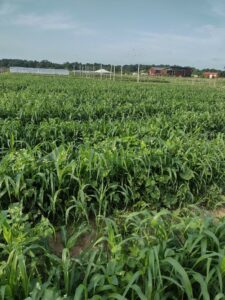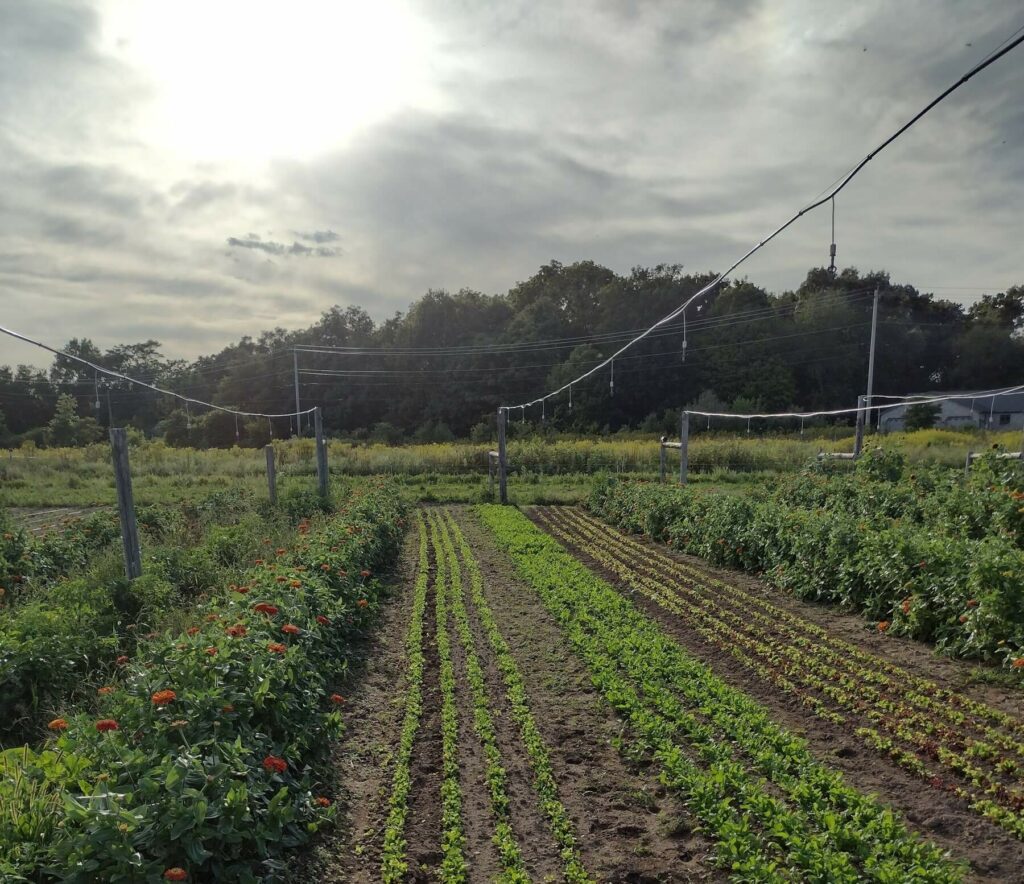I have been interested in minimizing soil disturbance ever since I witnessed flood waters carrying tilled soil down a creek next to the farm in Indiana where I first worked in 2007. These deep, chocolate, and churning waters were so sharply different from the crystal-clear, gently flowing stream in our perennial cattle pasture just across the road. In the moments after this rainstorm, I came to realize the importance of minimizing soil disturbance.
When my wife and I started our own vegetable farm in Ohio, we used an abundant local resource of wood chips mixed with our own cattle manure to make a composted mulch. We lightly tilled the mulch to reduce weeds in our vegetable fields, as opposed to tilling the soil. This worked well in general, but Canadian thistle came to be a big problem in these fields as nature will often find a plant that can photosynthesize in the spaces that farmers create. With this system, the deeper layers of clay retained their soil aggregation and the worm and insect pathways enabled water to flow into the soil rather than over it. The retained soil structure made it so that we could plant transplants rain or shine without sinking in mud.
When that leased land was sold for development, we moved west where I farmed at a ranch that grew mostly grain and sheep in a more arid environment. This was a far different context and resource base, but I knew that minimizing soil disturbance was still critical. Cover crops were the best tools that I could find to do this. We used vetch, cowpeas, and mung beans intercropped between corn. We used the Smartmix Calculator to create a mix of male sterile sorghum and low growing cover crops. Our ewes were so scared to walk into the tall sorghum that they grazed it entirely from the outside edge inward! The frost killed any remaining cover crops and the field was weed free and ready for a no-till grain planting. The forage yields off this field were excellent, yet the soil was never exposed.

21-way cover crop mix setting the stage for veggies next year!
I now farm in Michigan which is closer to where my wife and I grew up. The context of our current farm has inspired a system where vegetables are grown as an alley crop for an overstory of newly planted perennial fruit trees that are being planted every 15 feet in the field. Multi-seed mixes from Green Cover are being utilized in this system as cover crops with the intention of discovering which cover crop seeds function best with a blind cultivator (tine weeder). Certain vegetables require a very clean seedbed, so cultivation of the cover crop will be very important to prevent a buildup of weed seeds in the field. For this to work in our certified organic system, tillage is needed to keep weeds from going to seed. After my years of experience and understanding the importance of minimizing soil disturbance, I realize that this will certainly sacrifice some soil health in the short term. I have found, however, that I can restore the soil by having something growing again immediately after a light tillage pass. The Smartmix Calculator helped me to come up with a cover crop mix that I could cultivate. After one season of exploring the technique, the tine cultivated cover crop showed promise as a replacement technique for bare fallow in our vegetable crop system. The cover crop mix will help me minimize disturbance in the short term when vegetable crops are needed to pay the bills. In the long term, the perennial tree and bush crops will be the keys to minimize disturbance for this landscape.

Salad greens, cut flowers, berries, peppers, and other veggies interspersed with cover crops
Each farm, situated in a unique soil, resource, and climate context requires its own system and plan to minimize soil disturbance. Green Cover has provided me with vital tools to be successful in all these situations.
This article first appeared in the 9th Edition of Green Cover's Soil Health Resource Guide.
Also check out the 11th edition, our latest Soil Health Resource Guide, over 90 pages packed with scientific articles and fascinating stories from soil health experts, researchers, farmers, innovators, and more! All as our complimentary gift to you, a fellow soil health enthusiast!
